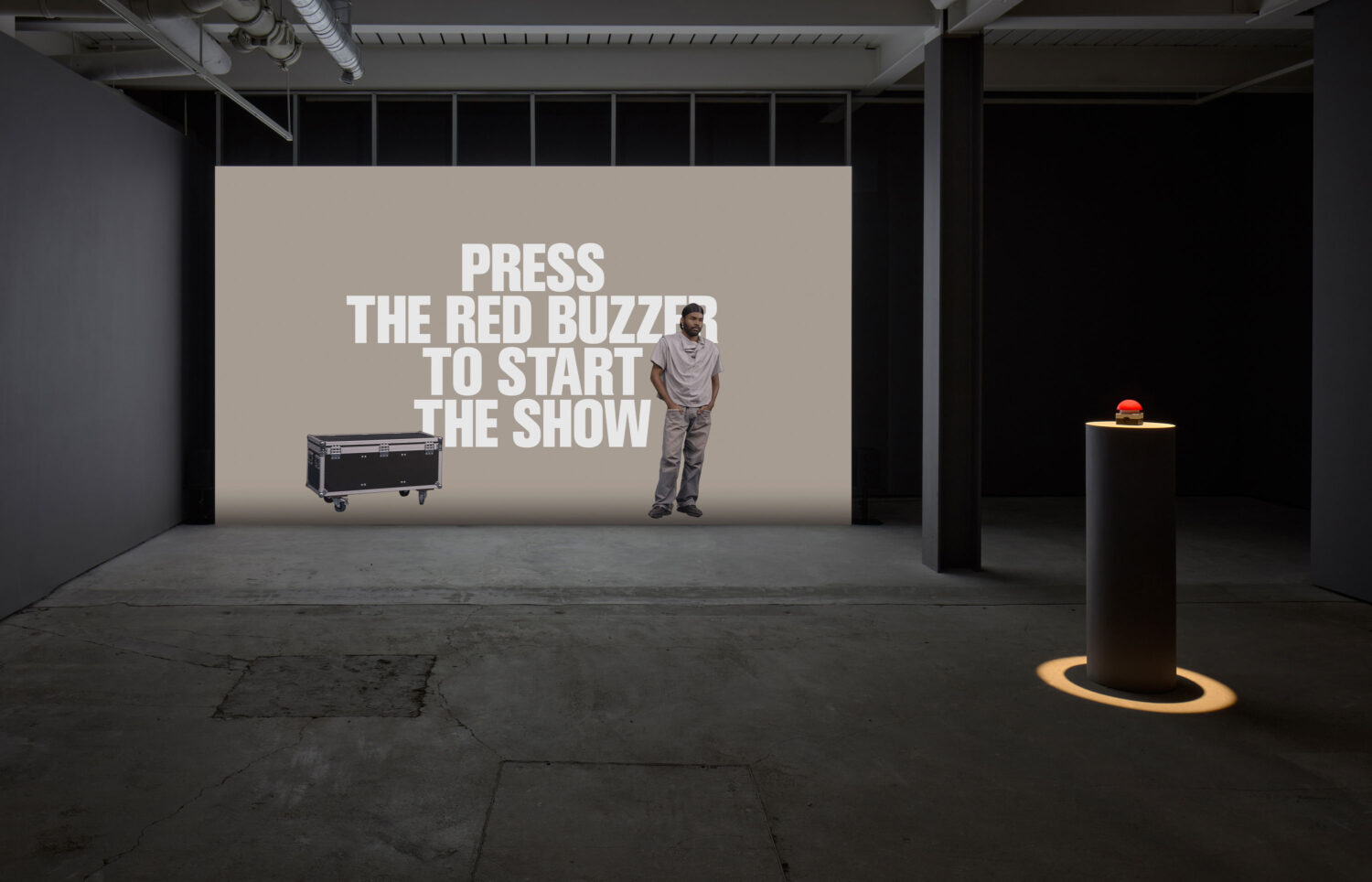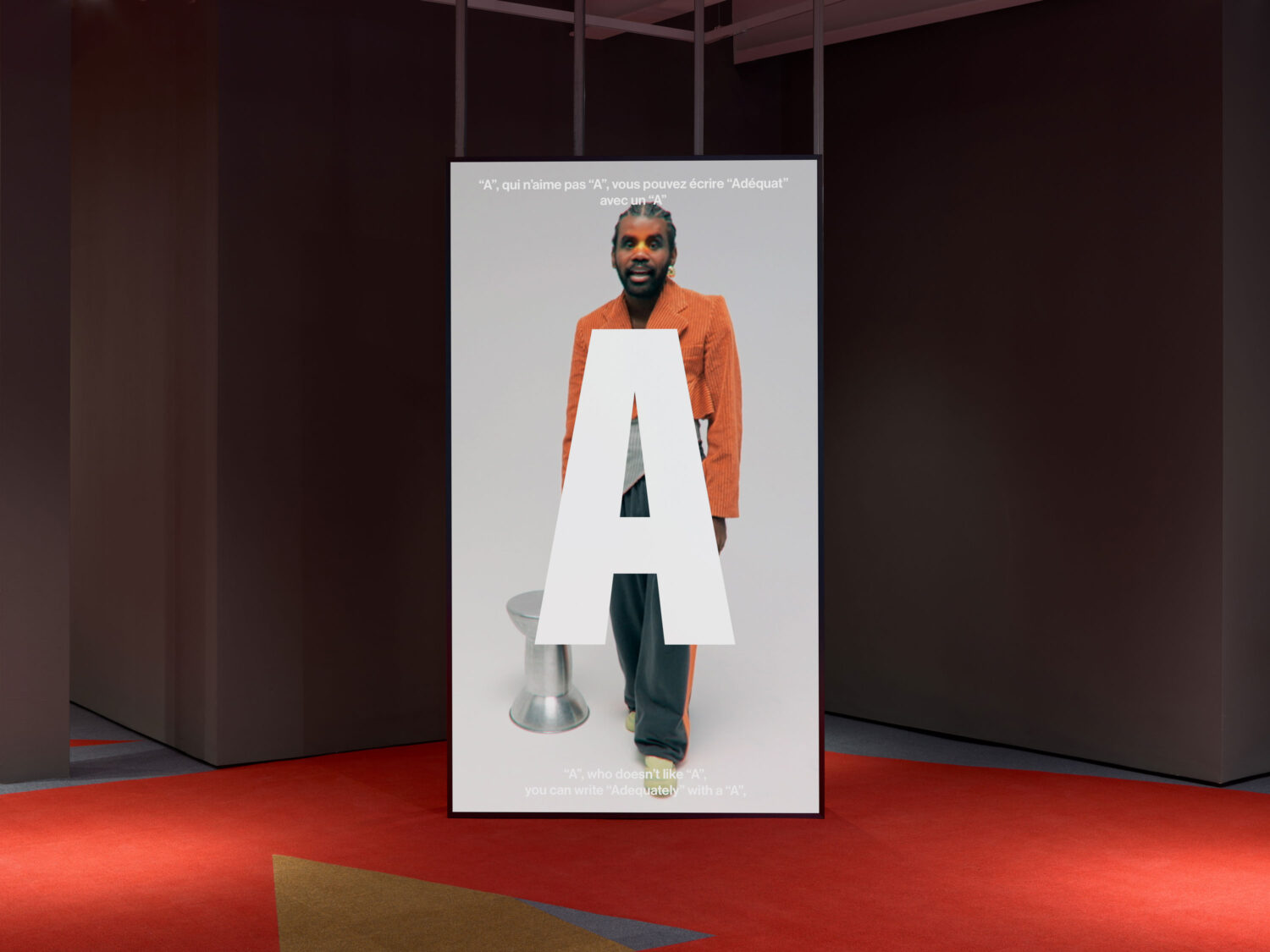Interview: Ndayé Kouagou Has a Message for Everybody
By Keshav AnandParis-based artist Ndayé Kouagou’s cross-disciplinary works evolve from self-authored texts, which serve as a launch pad to explore themes of unease, power, and vulnerability. His meandering output spans performance, film, textiles, sculpture, and installation—often probing the aphoristic language of self-help gurus and online influencers. The artist’s work has recently been shown at major institutions including Fondation Louis Vuitton, Wiels, and Centre Pompidou, among other spaces. And now, marking his first solo show with the London gallery, Gathering hosts Kouagou’s A Message for Everybody.
Using screens, plexiglass, resin and aluminium, Kouagou presents the viewer with elliptical statements and open-ended, existentially leading questions, simulating the twisting dialogue that dominates platforms like TikTok and Instagram. Surface and depth, humour and sincerity, clarity and confusion are granted equivalent significance in Kouagou’s work as he playfully explores the forms and effects of mediated communication. On the occasion of the Gathering show, Something Curated’s Keshav Anand spoke with the artist to learn more about his work and taste in pastries.

Keshav Anand: Your work critiques the language of aphorisms used by influencers and self-help figures. What initially drew you to examine this language?
Ndayé Kouagou: I think the critique of influencers feels a little outdated—a topic thoroughly explored and analysed. My approach now draws mainly on the language of aphorisms, which feels most natural to me. It’s the language I consume daily and reflects the essence of our time and generation. Using these more broadly recognisable references also makes my work more accessible, engaging a wider audience beyond more traditional contemporary art viewers, which is really important to me. What interests me is not what influencers say but the form and way they say things. Influencers and social media platforms create processes and a logic that I’m just re-using, the same way I use bold typographic design created by the world of advertising and marketing. I like to work with what is not owned by anybody and is part of the public domain.
KA: I’m curious to learn about your process. Does it always start with writing?
NK: Yes, everything starts with writing, in the notes app on my phone. I then aggregate different notes into a longer text, and then begin to identify connections between them. Eventually, I transform these longer texts into installations, video works, performances or even theatrical plays depending on what makes the most sense. Sometimes—let’s be honest, most of the time—what I believe to be an obvious train of thought is not as obvious as I think and, as a result, my works can feel ambiguous or even contradictory. But I think it’s a process shared by others… or maybe I’d like to believe everybody is as full of doubt as me—just to reassure myself.

KA: What role does ambiguity play in your work?
NK: Ambiguity is a tool, but if I’m being honest (again) it’s more a by-product of doubting than anything else. I have the feeling that sometimes the writing precedes the thought. When I’m writing, I don’t know precisely what I’m writing about and I think that’s where the ambiguity usually arises. I understand what I was actually talking about or what influenced me later on. Also, I think ambiguity is a good tool to open conversation up to others: indeed, I like to leave space for the audience to find meaning or to let their own thoughts grow in relation to what I say.
KA: Can you tell us more about the two video installations you are presenting in your show at Gathering in London?
NK: I like to keep things simple, and so the first video installation, titled A to Z, answers a simple question: “How to go from A to Z and why not stop at N?”. The second installation titled Here & Elsewhere is a message for everybody, about everybody. If I haven’t managed to pique your curiosity with such alluring promises, I don’t know what will.

KA: How did you conceive The Narrator figure in Here and Elsewhere?
NK: This character is recurrent in my work. In Here and Elsewhere, they are a narrator but last year in my installation at the Louis Vuitton Fondation they were The Guru. It’s a character made to be universal, who does not have a gender, nationality, or any defined identity. The character is a representation of a Westerner, in which I hope everybody (across the Western world) can identify which, again, links back to my obsession with approachability.
KA: Changing pace for a moment, where are your favourite places to eat in Paris?
NK: I’m a pastry aficionado. I can give you amazing pastry shops: try the flan at Bontemps Pâtisserie, the forêt-noire at Stohrer, and the mille-feuille at Bistrot Vivienne.

KA: And what are you currently reading?
NK: If I’m being honest (yet again) I’m not in a reading mood, so I have not read anything lately. But I can tell you what I’m listening to: my new favourite French rapper/singer Genezio and his beautiful track Dans mon monde (In my world). I just listened to his two EPs Bounce Music 1 & 2, as well as Pa Salieu’s new album Afrikan Alien.
Ndayé Kouagou’s A Message for Everybody is open now and on view until 22 February 2025 at Gathering London.
Feature image: Installation View, Ndayé Kouagou, A Message for Everybody, Gathering, London, UK, 29 Nov 2024 – 22 Jan 2025 Photography: Ollie Hammick